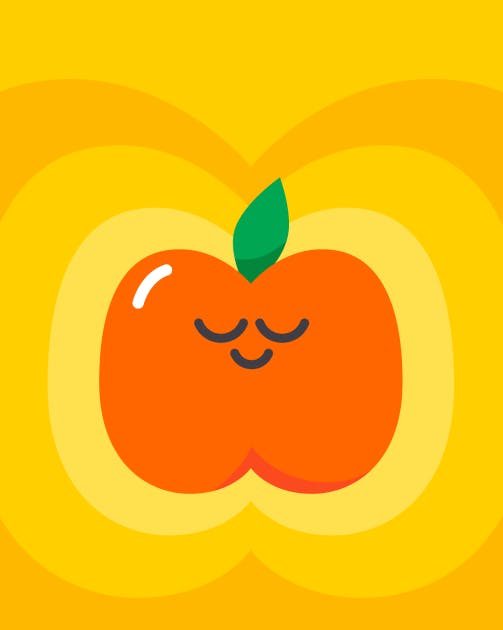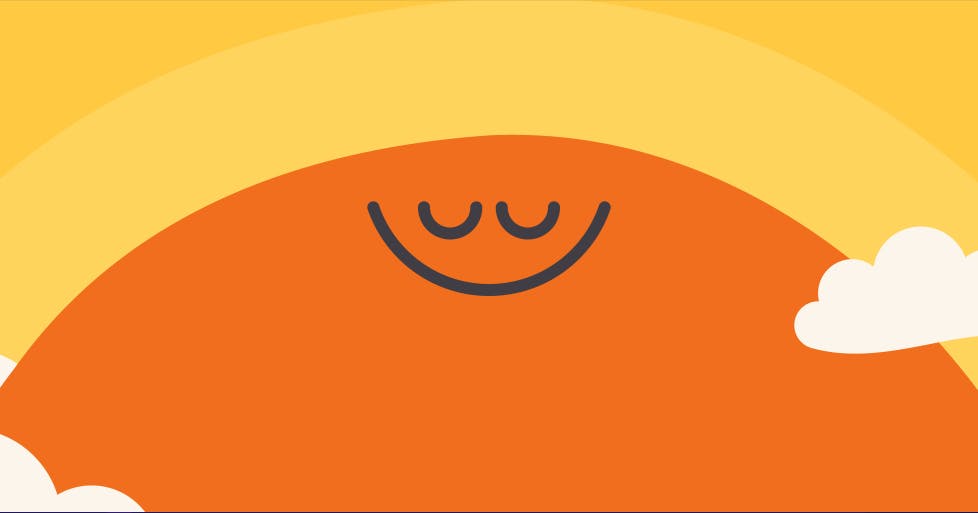Meditation for school
When it’s time to learn new skills and ideas, an overactive mind can be our worst enemy — whether we’re age 5 or 50. For kids in school, distracting thoughts can be a constant challenge to their focus, at a time when they need to be absorbing a ton of information. Meditation can help to calm those young, busy minds, but can it also help kids perform better in the classroom?
While it’s by no means the ticket to a perfect report card, meditation — especially when taught at an early age — can become an invaluable tool for any student to help them slow down, become better problem-solvers, and enhance their understanding of their own innate character and abilities. What’s more? It might also set them up for a healthier and happier life as an adult.

Can meditation improve kids’ performance in school?
Key takeaways:
-
Several crucial components of learning develop in children earlier than we may think
-
Meditation can improve how we store, utalize, and filter information in both kids and adults
-
Try 15 meditations for learning and doing better in school
Understanding the keys to learning and development
As we search for ways to help kids perform their best in school, it’s important to first look at and understand the role of one of the brain’s key executive functions for cognitive development, what's called working memory.
Working memory essentially refers to our ability to store and utilize information for brief periods of time. It can be particularly important when we use it for academic skills, such as literacy and mathematics.
We might try thinking of working memory like a blank notebook page in the mind: as new information comes in, our brain scribbles that information down onto the blank page, keeping it handy until we know whether or not we’ll need to use it again later. Sometimes, the things that get written down are pieces of information we need to use immediately — a phone number we’re about to dial or a set of instructions we’ve just been given. Other times, our working memory connects the information we’ve just received with information stored in our long-term memory, helping us to make connections and solve complicated problems.
This executive function also helps the brain decide what should be filtered down into our long-term memory, essentially acting as a built-in spam filter.
As useful as working memory is, it’s not boundless. If we overload that metaphorical blank notebook page with too much information, it becomes difficult for the mind to access what it needs right now and prioritize what it should store for later. To calm a busy mind — and therefore improve working memory — meditation has been proven to help.
In addition to working memory, studies show that helping kids develop their awareness of their own learning or thinking processes — called metacognition — can help them in the classroom. This is a skill that develops at a younger age than we might think: evidence suggests that by age 4-5, children have fully developed this function.
Broadly speaking, metacognitive instruction really just means increasing a child’s awareness of the progress they’ve already made, helping them understand what they need to know to solve a problem, and empowering them to use their existing skills to tackle new questions. In other words, helping them understand and reflect on thought patterns — a core component of mindfulness.
Help children stay focused on the task at hand with these expert tips

Watch Helping Kids Focus: Mindfulness for Kids and Families - 6 min
How meditation can improve kids’ ability to learn
Over the years, science has repeatedly shown just how much of a positive impact mindfulness has on the brain’s ability to learn. In one study, researchers found that novice meditators who participated in just 4 days of meditation training saw a significant improvement in their working memory, executive functioning, and sustained attention. Another study showed that mindfulness training resulted in measurably higher test scores amongst undergraduates who participated in a 2-week long mindfulness training session.
The majority of research on the relationship between meditation and working memory has been conducted on adults. However, while research on adolescents is sparse, there are a few findings with equally promising results: One study (in which participants ranged from age 12 to 17) found a measurable connection between mindfulness meditation training and improvements in working memory capacity. Similar results have also been reported amongst slightly older adolescents (with a mean age of 17-18). In this group, 9 minutes of meditative movement for 3 weeks showed an improvement in working memory capacity.
Researchers believe the positive correlation between meditation and working memory may be due to its ability to reduce mind wandering. Through meditation, kids will learn how to retrain their busy minds to remain focused on the present moment.
To familiarize kids with the fundamentals of meditation and mindfulness, Headspace recruited the help of a few beloved fictional characters. In one video, kids are invited to join Barbie in a short, guided meditation. In another series of videos, Headspace co-founder and former Buddhist monk Andy Puddicombe helps the characters of Sesame Street use mindfulness in a variety of life situations.
As meditation becomes an everyday part of a child’s routine, the fundamentals of the practice will eventually seep into their daily life and their time spent in the classroom. With a more mindful grasp on how to navigate distractions, they can improve their working memory by preventing information overload. And with less scribbled on that mental notebook page, they may also unlock improved focus and the ability to process information more efficiently.
Meditation for kids in school
“Teaching kids about meditation at an early age can set them up for life,” says Andy. “But we all know that sitting quietly isn’t that easy — it’s not easy for us as grown-ups, so think how hard it is for kids. They’d much rather be out and about having fun, than sitting still with their eyes closed.”
Parents and teachers alike may well face resistance from children when first raising the idea of meditation, so our approach can be important. To pique those curious minds, we might broach the subject by sharing a few of the benefits. What child or student wouldn’t want to feel calmer, sharper, less anxious, and experience more peace of mind?
When parents and teachers use meditation for school, it can certainly be helpful to take kids through a short, guided meditation before class or a big test. Just know that exact timing isn’t as important as continued practice. With practice, meditation cultivates an awareness that helps kids recognize when their mind is busy and provides them with a mental toolkit they can use to calm and reset.
While a daily 20-minute meditation practice may not be the most realistic option for little ones, there are other kid-friendly ways to infuse more mindfulness into their everyday routines.
For example, we might try mindfulness activities for kids — quick, easy ideas for families to incorporate into their routines, all proven to benefit children’s mental and physical health. These range from practicing a mindful bedtime routine to simple breathing exercises designed just for kids. Not only are these techniques effective on their own, but they might also serve as a potential gateway to starting (and sticking with) a guided meditation practice.
Try 15 meditations for learning and doing better in school
Looking for easy back-to-school meditations? The Headspace app has a Back to School collection where subscribers can access meditations for parents, kids, and teachers to make space for all their back-to-school feelings, including:
Back-to-school meditations for parents
-
Letting Go of Stress 10-day course. Learn to reframe negative emotions and let them go.
-
Care for Caregivers video. Learn how to love yourself while caring for others.
-
Alone Time meditation. Allow yourself to unwind when no one’s around.
-
Moments Away from Kids meditation. Enjoy a moment of stillness while your kids are at school.
Back-to-school meditations for teachers
-
Navigating Change 10-day course. Train your mind to be more comfortable with change.
-
Emotions at School video. Learn why emotional intelligence is a skill that should be taught in every school.
-
Burned Out meditation. Step away from worried thoughts.
-
In Between Classes meditation. Ground yourself between moments of classroom chaos.
Back-to-school meditations for kids
-
Belly Breathing with Rosita video. Soothe nervous feelings about going to school with help from Rosita from Sesame Street.
-
Paying Attention meditation. Ages 3-5, ages 6-8, ages 9-12. Kids will use their imagination to practice a relaxed, precise kind of focus.
-
Stay Positive meditation. Ages 3-5, ages 6-8, ages 9-12. Help your child focus on a light, playful attitude towards life.
-
Smooth Start meditation. Help your mind wake up for school.
Back-to-school meditations for in the classroom
-
Exam Prep meditation. Find the sweet spot between focus and relaxation.
-
Classroom Mindfulness meditation. Create a calm learning environment by practicing as a group.
-
3 Mindfulness Exercises to Inspire You and Your Students video. Learn simple exercises to de-stress and motivate students and yourself.
Students are in the process of developing life skills and figuring out who they are, all while studying, learning in the classroom, and taking exams. Meditation can help them build healthy habits that support them in these moments — better focus, less stress, and happier thoughts — and last them a lifetime.


Be kind to your mind
- Access the full library of 500+ meditations on everything from stress, to resilience, to compassion
- Put your mind to bed with sleep sounds, music, and wind-down exercises
- Make mindfulness a part of your daily routine with tension-releasing workouts, relaxing yoga, Focus music playlists, and more

Stay in the loop
Be the first to get updates on our latest content, special offers, and new features.
By signing up, you’re agreeing to receive marketing emails from Headspace. You can unsubscribe at any time. For more details, check out our Privacy Policy.
- © 2025 Headspace Inc.
- Terms & conditions
- Privacy policy
- Consumer Health Data
- Your privacy choices
- CA Privacy Notice


